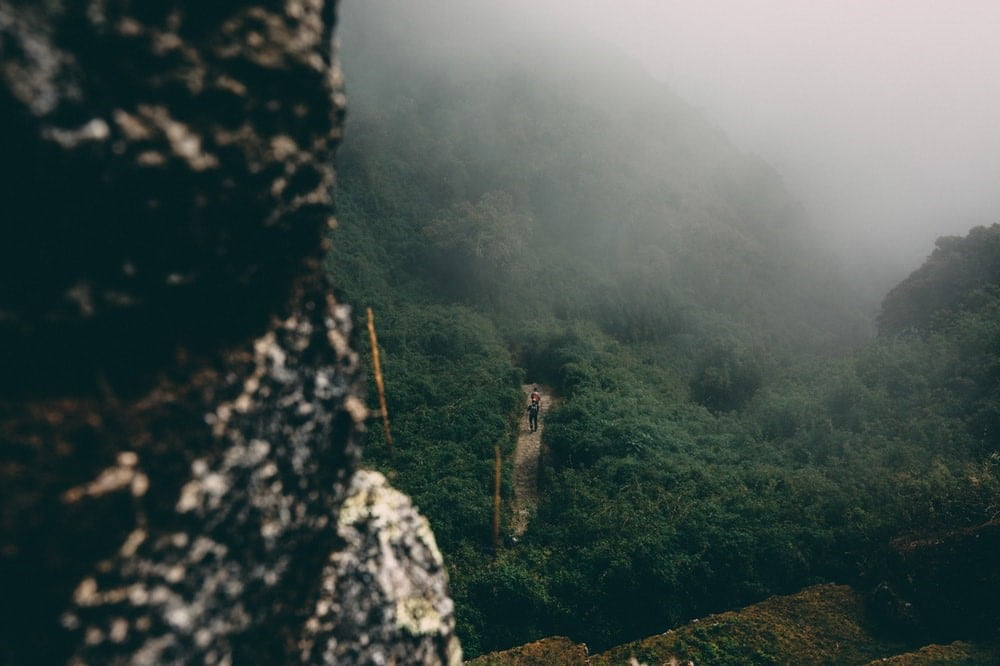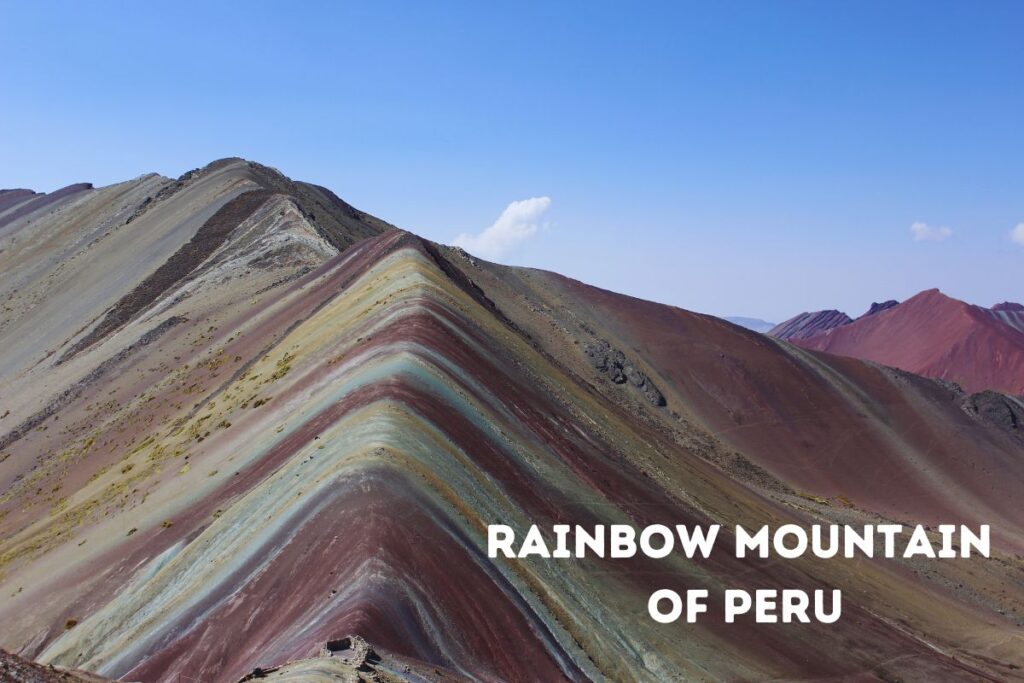Machu Picchu, the ancient Incan city nestled high in the Peruvian Andes, is one of the most iconic landmarks in the world. Beyond its breathtaking architecture and captivating history, Machu Picchu is rich with spiritual significance. One of the most intriguing features of this UNESCO World Heritage site is the Sacred Rock, an ancient structure that has mystified archaeologists and visitors for years. This rock is not only an architectural marvel but also a key piece of the spiritual and astronomical traditions of the Inca civilization.
Must do Tours
In this post, we will dive deep into the history, significance, and mysteries surrounding the Sacred Rock of Machu Picchu. We will explore its potential purposes, the symbolism behind it, and how it continues to capture the imagination of travelers and historians alike.
What is the Sacred Rock of Machu Picchu?
The Sacred Rock, located in the central area of Machu Picchu, is a massive, naturally occurring stone formation that stands as a prominent feature within the ancient city. The rock is strategically placed near the Intihuatana, a ritual stone associated with Incan astronomy and religion. Experts believe the Sacred Rock may have been used as a sacred site for rituals, possibly linked to the worship of the sun god, Inti, and other deities in the Incan pantheon.
Unlike other rocks within Machu Picchu, the Sacred Rock appears to have been modified or shaped by the Incas. Its surface has smooth edges, suggesting it may have been intentionally altered for ceremonial purposes. Additionally, its location and alignment with other important structures within the site point to its astronomical significance.
Historical and Cultural Significance
Spiritual Connection: The Incas were deeply connected to the natural world, and the Sacred Rock likely served as a site for religious ceremonies, particularly those related to the sun. The proximity of the rock to the Intihuatana, which was used as a solar clock, suggests that the Incas may have used this area for astrological and agricultural purposes.
Astronomical Alignment: One of the most intriguing aspects of the Sacred Rock is its possible alignment with celestial bodies. Like many other structures at Machu Picchu, it is believed that the Sacred Rock may have been used in the Incan calendar system, helping the ancient civilization track the movements of the sun, moon, and stars.
Symbol of Incan Power: The Incas built Machu Picchu as a symbol of their power, and the Sacred Rock likely played a role in reinforcing this. By placing such a significant feature in the heart of the city, the Incas may have been asserting their control over both the physical and spiritual realms.
Theories About the Sacred Rock’s Purpose
The true purpose of the Sacred Rock remains a subject of debate among scholars, but several theories have been proposed:
- Astrological Tool: Some experts believe the Sacred Rock was used as an observatory for the Incas to monitor the movements of celestial bodies. Its alignment with key structures like the Intihuatana points to its potential role in agricultural and seasonal ceremonies.
- Sacred Ritual Site: Another theory is that the Sacred Rock was a location for sacred ceremonies. The Incas often performed rituals to honor the sun god, Inti, and other deities, and this rock could have been central to such practices. The site’s spiritual energy and its prominence in the city may have made it a focal point for worship.
- Sacred Symbol: A more symbolic theory suggests that the Sacred Rock may represent the connection between the physical world and the divine. By positioning this rock in a place of prominence, the Incas could have been symbolically expressing their relationship with the gods and the natural world.
Why is the Sacred Rock Important to Visitors Today?
Today, the Sacred Rock of Machu Picchu continues to captivate visitors from around the globe. As part of the spiritual and cultural heritage of the Inca Empire, it holds an immense amount of significance for travelers who are seeking a deeper understanding of the ancient civilization.
For many, the Sacred Rock is not just a geological feature; it is a place of introspection and connection to the spiritual energy of Machu Picchu. Whether you are an archaeology enthusiast, a history lover, or simply someone seeking a spiritual experience, the Sacred Rock provides a profound opportunity to engage with the mysteries of the Inca world.
Where is the Sacred Rock of Machu Picchu Located?
The Sacred Rock is situated in the heart of Machu Picchu, near the center of the archaeological site. Specifically, it lies close to the Intihuatana, the famous stone ritual structure that was used by the Incas for astronomical purposes. The rock is positioned in a prominent location, offering stunning views of the surrounding mountains and the lush valleys below. Visitors can easily access the Sacred Rock while touring the site, as it is part of the main path that connects the key landmarks within Machu Picchu. Its central placement highlights its importance in the Inca city, both as a spiritual site and a natural feature integrated into the architectural design of the city.
Conclusion
The Sacred Rock of Machu Picchu stands as a testament to the Inca civilization’s advanced understanding of astronomy, religion, and their deep connection to nature. While the true purpose of the Sacred Rock remains a mystery, its placement, alignment, and role in Incan rituals provide invaluable insights into the spiritual and cultural practices of this remarkable civilization.
As visitors continue to explore Machu Picchu, the Sacred Rock remains an important piece of the puzzle that helps us better understand the mysteries of the ancient world. Its grandeur and symbolism serve as a reminder of the enduring legacy of the Incas and their reverence for both the physical and spiritual realms.
Frequently Asked Questions (FAQ)
1. What is the Sacred Rock of Machu Picchu?
The Sacred Rock is a large, natural stone formation at Machu Picchu that is believed to have been modified by the Incas for spiritual or ceremonial purposes. It is located near other significant structures, such as the Intihuatana, and may have had an astronomical or religious role.
2. Was the Sacred Rock used for rituals?
Yes, it is believed that the Sacred Rock played a role in Incan religious rituals, possibly related to the worship of the sun god, Inti. Its location and alignment suggest it was part of the Incan spiritual practices.
3. How does the Sacred Rock relate to the Intihuatana?
The Sacred Rock is located near the Intihuatana, a stone used by the Incas for astronomical observations. Both structures may have been part of the same spiritual and astronomical practices, with the Sacred Rock playing a supporting role in ceremonies.
4. Can visitors see the Sacred Rock?
Yes, visitors to Machu Picchu can see the Sacred Rock as part of their tour of the site. It is an essential feature of the archaeological park and provides insight into the spiritual and cultural practices of the Incas.
5. What theories exist about the purpose of the Sacred Rock?
Theories include its use as an astronomical tool, a site for sacred rituals, or a symbolic feature representing the connection between the physical world and the divine. Its exact purpose remains uncertain, but its importance to the Inca civilization is clear.
I am Carlos, founder of Machu Picchu Soul, a local tour operator and travel agency based in Cusco, Peru. My journey in tourism began as a porter on the iconic Inca Trail, where I developed a deep connection with the land and its history. After years of dedication, I became a professional tour guide, honing my skills to deliver exceptional experiences. With over 15 years of expertise, I decided to establish Machu Picchu Soul to combine my passion for authentic travel with a commitment to supporting local communities and creating unforgettable adventures for our guests.




